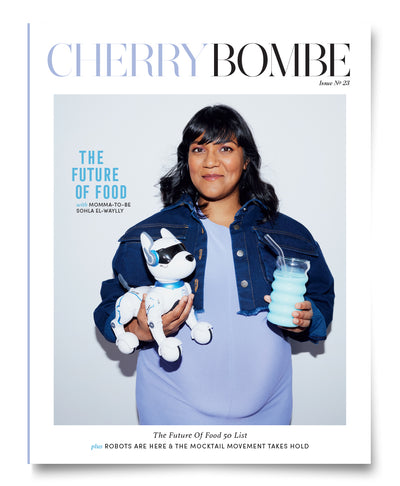Milk Chocolate Humble Pie From Dominique Ansel
It’s amazing how much insight you can get from 35 characters. That’s how long the message on our cake plaques can be. In the back of our kitchen, our chef rolls a small cornet out of parchment paper, spoons in a dollop of melted chocolate, and delicately pipes out the message in cursive. Suddenly, the cake has a voice.
“Happy 100th Birthday, Great-Grandpa” brought an extra-wide smile to my face. What a night that must have been with generations coming together to celebrate a milestone. Each letter added more color to the picture, and more heart to the flavors.
Curiously, once in a while a different type of message would surface. The first one that I noticed simply said: “I’m sorry I forgot.” A few months later, we spotted a “Please forgive me.” And even one that said: “I hope we can still be friends.” It never occurred to me that cakes could be messengers for apologies.
To be honest, I was a little skeptical. Would I really forgive someone because they got me a pastry?
One day, I decided I would ask. A guest had come to pick up her cake decorated with a “I’m sorry for being grumpy” plaque. “Are you receiving the apology or giving it?” I asked. She explained she was the apologizer, not the apologizee, and she was bringing it to a coworker.
When asked whether she thought this was effective, she smiled. “Well, I love pastries and they always make me feel better. So, I know people who know me will understand the sincerity behind this.” She looked lovingly at the chocolate silk pie that she had chosen, her version of a “humble pie.” Layers of chocolate on top of chocolate decadence, the star being the rich ganache filling, which carries with it the hopes of smoothing out any argument. It’s a recipe that takes a little planning ahead to make each component—from the chocolate sablé pie dough to the ganache filling to finally the vanilla whipped cream on top. It is built from the bottom up, with the darkest chocolate flavor in the crust and the lightest peaks of cream on the top.
“Worse comes to worst, I’ll eat it. I’ve got a sweet tooth,” she said before heading out. “And for that, I’m never sorry.”
Photo by Evan Sung
INGREDIENTS
Makes 1 pie (6 to 8 servings)
CHOCOLATE SABLÉ CRUST
⅔ cup (80 grams) powdered sugar
¼ cup (24 grams) unsweetened cocoa powder
1¼ cups (200 grams) all-purpose flour
1¼ (7 grams) teaspoons salt
1 stick + 2 tablespoons (140 grams, 5 ounces) unsalted butter, at room temperature
1 large egg (50 grams)
Softened unsalted butter, for the pie pan
MILK CHOCOLATE GANACHE
½ cup + 1 tablespoon (130 grams) whole milk
1 cup (229 grams) heavy cream
5 large (104 grams) egg yolks
⅓ cup (76 grams) granulated sugar
2½ cups (330 grams) chopped milk chocolate
½ cup (104 grams) water
2½ tablespoons (17 grams) unsweetened cocoa powder
VANILLA WHIPPED CREAM
2 cups + 2 tablespoons (500 grams) heavy cream, well chilled*
¼ cup (50 grams) granulated sugar
Vanilla seeds (scraped from 1 vanilla bean) or ½ teaspoon vanilla extract
*Make sure your cream is cold. If it’s room temperature or warm, it won’t whip up into fluffy peaks.
ASSEMBLY
Cocoa powder or chocolate shavings, for garnish






